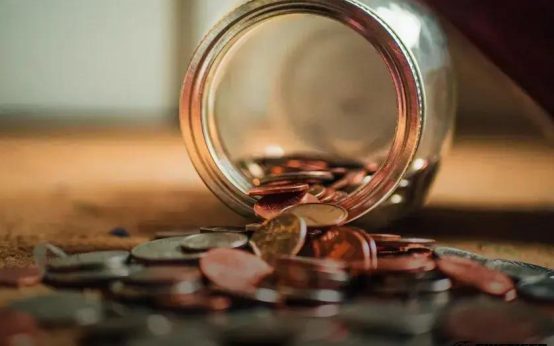Buying a home can be daunting, especially with the looming thought of a hefty down payment. However, knowing how to buy a home with a low down payment can make this dream accessible. This article aims to guide you through understanding low down payment mortgages, exploring government-backed loan options, devising saving strategies, and offering tips for negotiating better terms. Whether you’re a first-time buyer or looking to upgrade, these insights will help you step smoothly into homeownership.
Understanding Low Down Payment Mortgages
Low down payment mortgages provide an opportunity for potential homeowners to purchase a house with a much smaller initial investment compared to traditional loans. These mortgages are designed to make buying a home more accessible to a wider range of buyers. Common low down payment options include FHA loans, which typically require as little as 3.5% down, and conventional loans tailored for first-time buyers.
Low down payment options might have different requirements compared to standard mortgage loans. For instance, borrowers may need to have a higher credit score or attend a homebuyer education course. It’s also common for these loans to have private mortgage insurance (PMI), which protects lenders in case of default.
Choosing a low down payment mortgage allows many buyers to keep more cash on hand for other needs like home repairs or furnishings. It’s crucial to understand the total costs involved and evaluate how they fit into your long-term financial plan. Make sure you also consider the terms and conditions of each mortgage option.
Consulting with a financial advisor or mortgage broker can be beneficial in understanding all this complex information. They can provide insights into how such mortgages can align with your personal financial situation and homeownership goals.
Exploring Government-Backed Loan Options

When you’re looking to purchase a home with a low down payment, government-backed loans can be a game changer. These loans are designed to help buyers who might not meet the requirements for conventional loans. There are several options to explore:
FHA Loans
The Federal Housing Administration (FHA) offers loans with as little as 3.5% down. These loans are an excellent option if you have a lower credit score, as the eligibility criteria are more lenient than traditional loans.
VA Loans
If you are a veteran or an active service member, VA loans are supported by the Department of Veterans Affairs. A major advantage is that they require no down payment. Additionally, they often come with lower interest rates and no mortgage insurance premiums.
USDA Loans
For those interested in rural properties, the United States Department of Agriculture offers USDA loans with zero down payment. These loans aim to boost homeownership in rural areas and often include low interest rates.
Application Process
Applying for a government-backed loan involves providing financial documents, proof of income, and a steady employment history. It’s essential to understand each option’s specific criteria to maximize your chances of approval.
Benefits of Government-Backed Loans
These loans offer lower down payment requirements, more flexible credit score requirements, and competitive interest rates, making homeownership accessible to a broad range of buyers.
Saving Strategies for a Lower Down Payment
When looking to purchase a home with a low down payment, it’s crucial to have a solid saving strategy in place. Here are some effective methods to boost your savings:
- Budgeting: Start by creating a budget. Track your monthly income and expenses. Pinpoint areas where you can reduce spending. Put these savings directly into your down payment fund.
- Reduce Debt: Pay down existing debts. Eliminating debts decreases financial burden and can improve your credit score, which can lead to better loan terms.
- Automate Savings: Set up an automatic transfer to your savings account each month. This ensures that you consistently save money without having to think about it.
- Utilize Bonuses and Tax Refunds: Allocate any unexpected income, such as bonuses or tax refunds, directly into your down payment savings.
- Side Hustles: Consider taking on a side job or freelance work. Additional income can significantly increase your savings rate.
- Cut Unnecessary Expenses: Analyze your expenses and identify non-essential spending. Cutting out things like dining out frequently, subscriptions, or impulse buys can add up over time.
- Use High-Interest Savings Accounts: Store your down payment funds in a high-interest savings account. This way, your money earns interest and grows faster.
By implementing these strategies, you can efficiently build up your down payment savings and move closer to buying your home.
Tips for Negotiating Better Terms

When buying a home with a low down payment, effectively negotiating terms with sellers can significantly enhance your advantage. Here are some tips to help you achieve better deals:
- Understand Seller’s Motivations: Knowing why the seller is eager to sell can be a powerful tool. Are they moving to a new city, or are they under financial pressure? Use this knowledge to negotiate favorable terms.
- Leverage a Pre-Approval: Having a mortgage pre-approval shows the seller that you are serious and financially reliable. This can give you leverage in negotiations as it puts you in a stronger position than other potential buyers.
- Offer Flexible Closing Dates: If you can be flexible with your closing date, this might be appealing to some sellers and could lead to better terms.
- Request Seller Concessions: Ask the seller to cover some of the closing costs. This can reduce your out-of-pocket expenses and make the purchase more affordable.
- Be Prepared to Walk Away: Sometimes the best negotiating tactic is to show willingness to leave the deal. This can make the seller more likely to agree to your terms.
Following these strategies can help you secure a home purchase on terms that suit both your financial ability and living needs.




